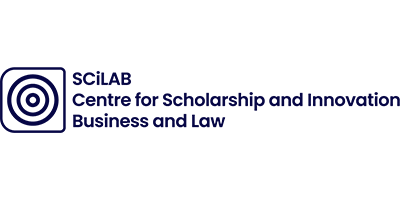You are here
- Home
- Blog
- Academics are from Mars and practitioners are from Venus – some thoughts on how to create a successful union based on value orientated collaboration
Academics are from Mars and practitioners are from Venus – some thoughts on how to create a successful union based on value orientated collaboration

By Richard Harding
It can often feel like academics and practitioners are from different universes, let alone planets.
The perspective from the lofty heights of academia’s ivory towers can make the world of practice seem remote. Conversely from a practice perspective academic knowledge and approaches can seem inaccessible and irrelevant. And yet, what is the point of practice focussed academic knowledge if it can’t or doesn’t help practitioners be better at what they do. Likewise, the world of practice has potentially much to offer academia. In this blog I discuss how we might think about shared value as a way to better bridge the divide between them to create unions made in, rather than separated by, the heavens.
As an academic there can be a number of challenges when working with practice orientated partners; one of the potentially most significant being what has been termed ‘the academic-practitioner divide’. Academics generally want to use/ create rigorous generalisable and defensible insights, but practitioners often prefer sector/ organisation relevant, context specific, prescriptive advice (Kondrat, 1995). This rigour versus relevance divide often has a temporal element; good research takes time but pressing business problems need solving yesterday. Sometimes we are just coming at the world from very different places. This can create fundamental tensions in the creation and understanding of value where the two worlds meet. It is important to recognise that the divide between practice and academia is not binary but rather operates as a continuum between the extremes of academics with no practice experience and practitioners with no academic experience. Between the two there is a wide range of possible positions, orientations and perspectives. However, the cultures and criteria for success in each sphere creates incentives to think about the world in certain ways and thus about what might constitute value in research and learning endeavours and their outputs.
This divide can be particularly acute when practitioners come to academe for support in the creation or development of learning resources/offers. Such requests may arise as a result of some perceived ‘crisis’ or critical deficiency in learning or knowledge or from an organisation’s wider consideration of their learning needs. These different imperatives can create different tensions in any collaboration. However, in both cases practitioners and academics alike may come to the party with fixed, and potentially very different, ideas about what is wanted or needed.
Bridging the divide
How might we seek to bridge this divide between practice and academe and bring the two worlds closer together? One way might be to think about the public mission of universities and how to best describe the value offering they make to their publics, customers and students. Public value theory (Benington, 2015; Benington and Moore, 2011; Moore, 1995) may provide a useful perspective here. Public value theory describes the nature of value creation in publicly orientated enterprises as an equivalent to private value creation in private ones. Whilst universities have some similarities with private enterprises their fundamental mission is, rightly, publicly orientated. The challenge here is that, unlike a private company, they are not simply manufacturing a widget that people choose to buy but rather they are trying to create value offerings in circumstances where ‘value’ may be contested and different ‘customers’ may perceive that value differently in different circumstances. Benington (2015) sees public value creation as a contested democratic process consisting of two related, but potentially distinct, principals; ‘what do these publics (customers, students) value in these circumstances’ and ‘what adds/ creates value in these circumstances.’ The two sides of the equation may be aligned, but equally they may be very different. Industry does not necessarily demand the provision of courses for poetry scholars, but the world, to my view at least, would be a potentially poorer place without them. Here we see it’s not only what is being asked for that is paramount but also what might add value in the given context. It is therefore not only important to engage what is being asked, but equally to think about what is being asked and to consider whether the question is the right one to create value. Taking this view of engaging the contested democratic nature of public value creation suggests that value might best be found through an ongoing discourse between practice and academe to better create common understandings between them.
Power and practice: recognising the strengths of each
However, even if we were to adopt this view, there remains an issue that needs to be addressed; that of the potential power imbalance between academic ‘experts’ and lay practitioners in any exchange between the two. Here, whilst academics are ‘experts’ in theory, subject and pedagogy, practitioners are equally expert in their own professional practice, circumstance, setting, challenges and needs. This again suggests that engagement, from a perspective of equivalence and mutual respect between the parties might represent a fruitful approach. By doing so we create the possibility of allowing the perspectives, voices, and expertise of both sides to be considered in determining what constitutes value. This of course does not suggest an equivalence of expertise in specific areas and therefore value outcomes are best developed by recognising and exploiting the relative strengths in knowledge and practice of those participating in any particular exercise.
Ultimately, it is likely to fall to academe to develop the learning products and approaches that are required to meet the practice partners request for help. How then might the public value equation be better balanced, and value added to the engagement between them and practice spaces?
One way might be to resist the siren call of ‘solutioneering’; the tendency to jump from perceived problem to desired answer that may be strongly felt on either side. We can all probably think of projects where senior leaders have had a solution in mind, be it the latest management fad or a piece of technology, and have then either created a problem to allow it to be implemented or shoehorned a problem and a solution together. Likewise, academics have been known to engage in mental gymnastics to solve a problem with their preferred model, theory or approach. In both cases my advice is to avoid this trap if you can, and if you can’t, to leave the project before go-live so that you can claim with good faith that it was working up to the point you left. In both cases it is unlikely that answering the wrong question with the wrong solution will add value. Value might however be found in working collaboratively to understand whether the perceived problem is the cause or a symptom of a more fundamental issue, as well as thinking more holistically (or in a systems thinking way) about what needs to be addressed and how best to do so.
Taking time to mutually consider and explore any potential differences between what is being asked for and what is actually needed (they are sometimes different), and to take the time to consider what might represent value in the particular circumstances is a critical step. You can always address ‘a’ problem, but whether you have addressed ‘the’ problem is a different issue. It is perhaps here that academe can best push the balance towards the ‘what adds value’ side of the contested scales of public value delivery. Our understanding of pedagogical approaches, the development of learning outcomes that meet learning needs, the creation of case appropriate blends of learning approaches, how to measure learning outcomes and impact and the sequencing of these approaches (pedagogy first, lesson plans later) along with the ability to leverage evidence based approaches are all strengths that academe can bring to the party. By these means academe might add value to their partnerships with practice and create unions that are stronger because of the differences between them, not despite them.
This blog represents the views of the individual, not SCiLAB or the Open University.
References
- Benington, J. 2015. Public Value as a Contested Democratic Practice. In: JOHN M. BRYSON, BARBARA C. CROSBY & BLOOMBERG, L. (eds.) Creating Public Value in Practice: Advancing the Common Good in a Multi-Sector, Shared-Power, No-One-Wholly-in-Charge World. Boca Ralton, FL: Taylor Francis Group.
- Benington, J. & Moore, M. 2011. Public Value Theory and Practice. In: BENINGTON, J. & MOORE, M. (eds.) Debating and Delivering Public Value. Basingstoke: Palgrave Macmillan.
- Kondrat, M. E. 1995. Concept, Act, and Interest in Professional Practice: Implications of an Empowerment Perspective. Social Service Review, 69, 405-28.
- Moore, M. H. 1995. Creating public value: strategic management in government, Cambridge, Massachusetts, Harvard University Press.

Richard Harding
Richard is a Research Fellow with the Centre of Policing Research and Learning (CPRL) within the Faculty of Business and Law (FBL). He helped deliver the two year Implementing the Transformation of Police Learning and Development Project, working collaboratively with academic, regulatory and practitioner colleagues to examine the current state of learning functions within policing across the UK. He is currently continuing his research into the development of Learning and Development systems, practices and change in policing organisations as well as knowledge exchange between academia and practice. Prior to joining academia Richard served as a police officer for 30 years. He successfully operated across a wide range of senior leadership, strategic and operational roles within London, nationally and internationally. As a result, he considers himself a practice orientated academic who cares passionately about enabling the conversation between academics and practitioners and ensuring that it results in mutually, and more widely, valuable outcomes.

Blog posts
- Rethinking Tuition: Reflections from the Staff Tutor / Student Experience Manager (SEM) Symposium, 4-5 December 2024 6th June 2025
- ‘Hitting the keyboard’ : Exploring student feelings and approaches to developing legal research skills 9th May 2025
- From Feedback to Action: The Student Voice Festival in Law Education 15th April 2025
